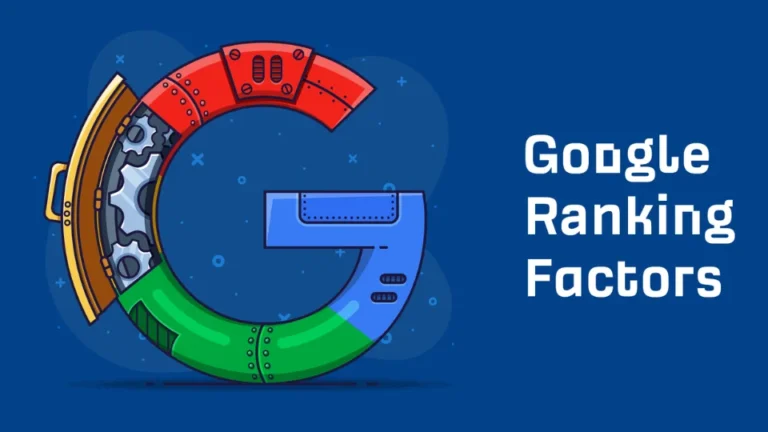SEO Strategy: How to Create an Effective Plan That Boosts Rankings
Creating a solid SEO strategy in 2025 isn’t just smart—it’s essential. As search engine algorithms get smarter and competition grows fiercer, having a clear SEO plan is the best way to grow organic traffic, improve visibility, and rank higher in search results.
Whether you’re building a website from scratch or optimizing an existing one, this guide will walk you through everything you need to develop a powerful, step-by-step SEO strategy that works.
What Is an SEO Strategy?

An SEO strategy is a detailed plan for improving your website’s position on search engine results pages (SERPs). It includes technical, on-page, and off-page tactics that help search engines find, understand, and rank your content.
Think of it as a roadmap that guides everything from keyword research to content creation, site performance, link building, and user experience.
Why You Need a Clear SEO Plan in 2025

Search engines like Google are constantly changing how they rank pages. A strong SEO strategy ensures your site remains relevant, visible, and competitive.
Benefits of a Strategic SEO Plan:

- Increases organic (free) traffic over time
- Targets high-intent keywords for better conversion
- Builds authority and trust with search engines
- Reduces reliance on paid ads
Step-by-Step Guide: How to Create an SEO Strategy
Let’s break down the SEO planning process into clear, actionable steps.
1. Set Clear SEO Goals
Start with what you want to achieve. Goals help you track progress and define success.
Examples of SEO Goals:
- Increase organic traffic by 30% in 6 months
- Rank in the top 3 for five target keywords
- Improve website load time to under 2 seconds
- Grow domain authority by building backlinks
2. Understand Your Audience and Intent
Knowing your target audience helps you create content that answers their questions.
Ask yourself:
- Who is my ideal customer?
- What problems are they trying to solve?
- What keywords are they searching for?
- What kind of content do they consume?
3. Conduct Keyword Research
Keyword research is the foundation of SEO. It helps you find terms your audience is searching for and build content around them.
Tools to Use:
- Google Keyword Planner
- SEMrush
- Ahrefs
- Ubersuggest
Tips:
- Target long-tail keywords (e.g., “best SEO tools for beginners”)
- Focus on search intent (informational, navigational, transactional)
- Check keyword difficulty and search volume
4. Analyze the Competition
Studying your competitors reveals what’s working in your niche and where gaps exist.
What to Look For:
- Top-performing pages
- Keyword overlap
- Backlink profile
- Content structure and format
5. Create and Optimize Content
Once you have keywords and insights, start creating content that solves problems and adds value.
Best Practices:
- Use keywords naturally in the title, headings, and body
- Include images, videos, and infographics for engagement
- Structure content with H2s and H3s for readability
- Keep paragraphs short and skimmable
6. Improve On-Page SEO
On-page SEO refers to optimizations you make directly on your site.
Key Elements:
- Title tags and meta descriptions
- Header tags (H1, H2, H3)
- Internal linking
- Image alt text
- URL structure
7. Ensure Technical SEO Is in Place
Technical SEO makes sure search engines can crawl and index your site efficiently.
Checklist:
- Mobile-friendliness
- Fast page loading speed
- Secure HTTPS connection
- XML sitemap and robots.txt
- Fix crawl errors and broken links
8. Build High-Quality Backlinks
Backlinks from reputable websites signal authority to search engines.
Ways to Earn Backlinks:
- Guest posting
- Digital PR
- Creating shareable infographics
- Participating in expert roundups
9. Track, Measure, and Adjust
Use analytics to monitor performance and make informed changes to your SEO plan.
Track:
- Organic traffic (Google Analytics)
- Keyword rankings (SEMrush, Ahrefs)
- Click-through rates (Google Search Console)
- Bounce rates and session duration
Comparison Table: SEO Tactics
| SEO Area | What It Does | Tools to Use | Priority |
|---|---|---|---|
| Keyword Research | Identifies target phrases | Ahrefs, SEMrush, Ubersuggest | High |
| On-Page SEO | Optimizes individual pages | Yoast SEO, Rank Math | High |
| Technical SEO | Improves crawlability and performance | Screaming Frog, GA4 | High |
| Content Strategy | Creates valuable, relevant content | Surfer SEO, Clearscope | High |
| Link Building | Builds authority with backlinks | Hunter.io, HARO | Medium |
| Analytics | Measures success and guides decisions | Google Analytics, GSC | High |
Pros and Cons of a Structured SEO Plan
Pros:
- Increases visibility and organic traffic
- Builds long-term results with compounding ROI
- Helps align content with business goals
- Reduces reliance on paid advertising
Cons:
- Requires consistent effort and time
- Results are not immediate
- Ongoing changes in algorithms require adjustments
FAQ: SEO Strategy Explained
1. How long does it take to see results from SEO?
Most websites see noticeable improvements within 3 to 6 months, depending on competition and consistency.
2. Do I need to hire an SEO expert?
Not necessarily. Many small businesses and bloggers manage SEO in-house using online tools. However, hiring an expert can fast-track results.
3. What’s the difference between on-page and off-page SEO?
On-page SEO involves optimizations on your website (content, tags, internal links), while off-page SEO focuses on external factors like backlinks and brand mentions.
4. Is SEO still relevant in 2025?
Absolutely. As long as people use search engines, SEO will remain critical for digital success.
Conclusion: Build Your SEO Strategy with Purpose
An effective SEO strategy isn’t a one-time task—it’s an ongoing process. But when done right, it becomes one of the most powerful tools for growing traffic, generating leads, and increasing revenue.
Start small: define your goals, do keyword research, and create valuable content. As you grow, layer on more advanced tactics like link building, technical audits, and conversion tracking.
Ready to improve your search rankings? Begin by auditing your website and mapping out a content plan aligned with your audience’s needs. The sooner you start, the faster you’ll see results.







